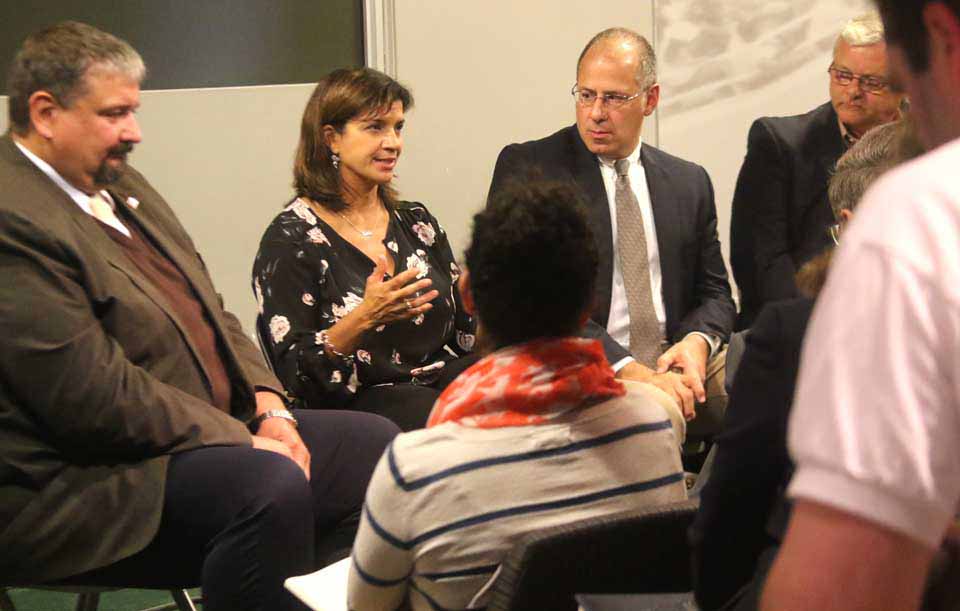EDITORIAL
MV500 Plan Condemns Otsego
To Low-Salary, Seasonal Jobs
Editor’s Note: This is an excerpt from this week’s editorial in Hometown Oneonta & The Freeman’s Journal, on newsstands in Oneonta, Cooperstown and beyond this afternoon.

Otsego County has been dealt out of the Utica-Marcy STEM and nanotechnology boom in the MV500 application submitted to the state Monday, Oct. 5, a huge disappointment to anyone who cares about economic development
locally.
That can’t stand.
MV500 is a six-county team – Otsego is one of the counties represented – pulled together over the summer to prepare the application for a half-billion dollars from Governor Cuomo’s Upstate Development Fund.
CLICK HERE TO REVIEW MV500 PLAN FOR YOURSELF
And the application that went in, in competition with six of the state’s other economic-development districts, is a very exciting one – for Utica’s Oneida County – but it falls very short for Otsego.
Otsego County gets nothing STEM or nano-related, only the promise of something peripheral – a possible commerce park on the Herkimer-Otsego line, north of Richfield Springs, if, when and somehow, if at all.
The county leadership – state Sen. Jim Seward, R-Milford, the Otsego Now board, county Board Chair Kathy Clark, R-Otego, and her team – needs to vigorously insist on Otsego’s inclusion in the biggest thing to happen in our neighborhood in a half-century.
More important – and undoubtedly more productive – is to develop a vision, a concept, of how Otsego County can serve Utica-Marcy’s STEM and nanotechnology needs in an essential way. We need to put ourselves in the picture, to show how we can contribute.


Great editorial, Jim. I was devastated to read the report and see very little mention of Otsego County. What a disappoinment. I also think the report in general is very weak compared to other regions. Much of it is banking on the STEM investment, and that’s a great opportunity, but transforming our entire economy is not feasible or practical or wanted. We need to better understand how we can accent the things we love about this area and improve the standard of living, without banking on a pipe-dream investment of hundreds of millions of dollars that will “transform” our economy Fundamentally, that money, no matter how much it is, will not change the need to adjust and amend the foundations of our economy. The pie-in-the-sky stuff that this report outlines certainly will not do this, nor is it intended to. But the fact that we aren’t even mentioned in the body is utterly unacceptable. Who is leading from our area? We need to hold our leaders accountable and demand that they do more.
I have been grant writing on behalf of Otsego County for more than 30 years. I have written grants for housing rehabilitation, repair, and development in the backwater of economic development in that these grant applications all require both demographic and economic factors. The county has been described as having, and continues to be, predominantly agricultural, education, and service industries. Not long ago, this would have included significant employment in textiles. New York State recently enacted a legislative initiative to allow agricultural production of industrial hemp. This crop requires no polluting fertilizers or controls and is suited to our natural climate. History shows that farming of hemp was an essential part of colonial life. This raw material is now being processed in neighboring Vermont and other states for clothing materials, food products, and fuel. With all the idle fields in Otsego County this enables new agricultural opportunity with yields that can open processing and other value-added industries. An honest evaluation of industrial hemp, outside any unrelated “Reefer Madness” influence, can lead to a significant increase in our agricultural production and rebirth of textile manufacturing. This avenue for economic development frees us from competing in the field of high tech while preserving the county’s agricultural base and renewing its textile heritage.